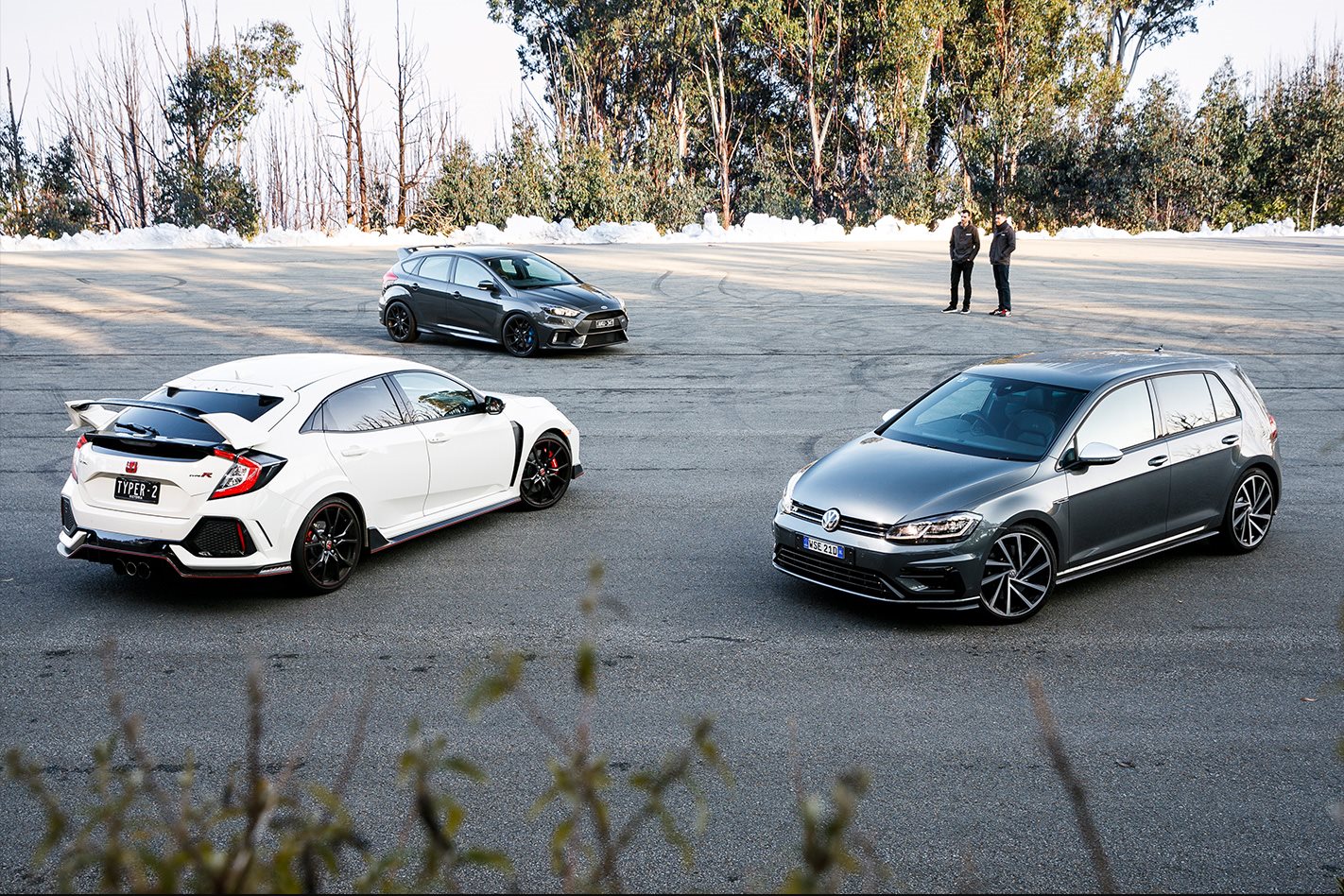TYPE R, as we know it, is dead.
That fabled emblem, venerated by petrolheads, once symbolised Honda’s unique brand of lightweight, free-breathing, high-rpm thrills. Early Type Rs were revelatory – particularly the DC2 Integra variety – but the game has changed over its 20-year epoch, and Australia has never seen the Civic Type R at its best.
Our sole exposure ended six long years ago when the European-sourced third-gen model departed Oz after a four-year tenure. There were no eulogies. Honda had diluted the Type R formula by that point, and its storied history of purist performance cars had started petering out long ago.
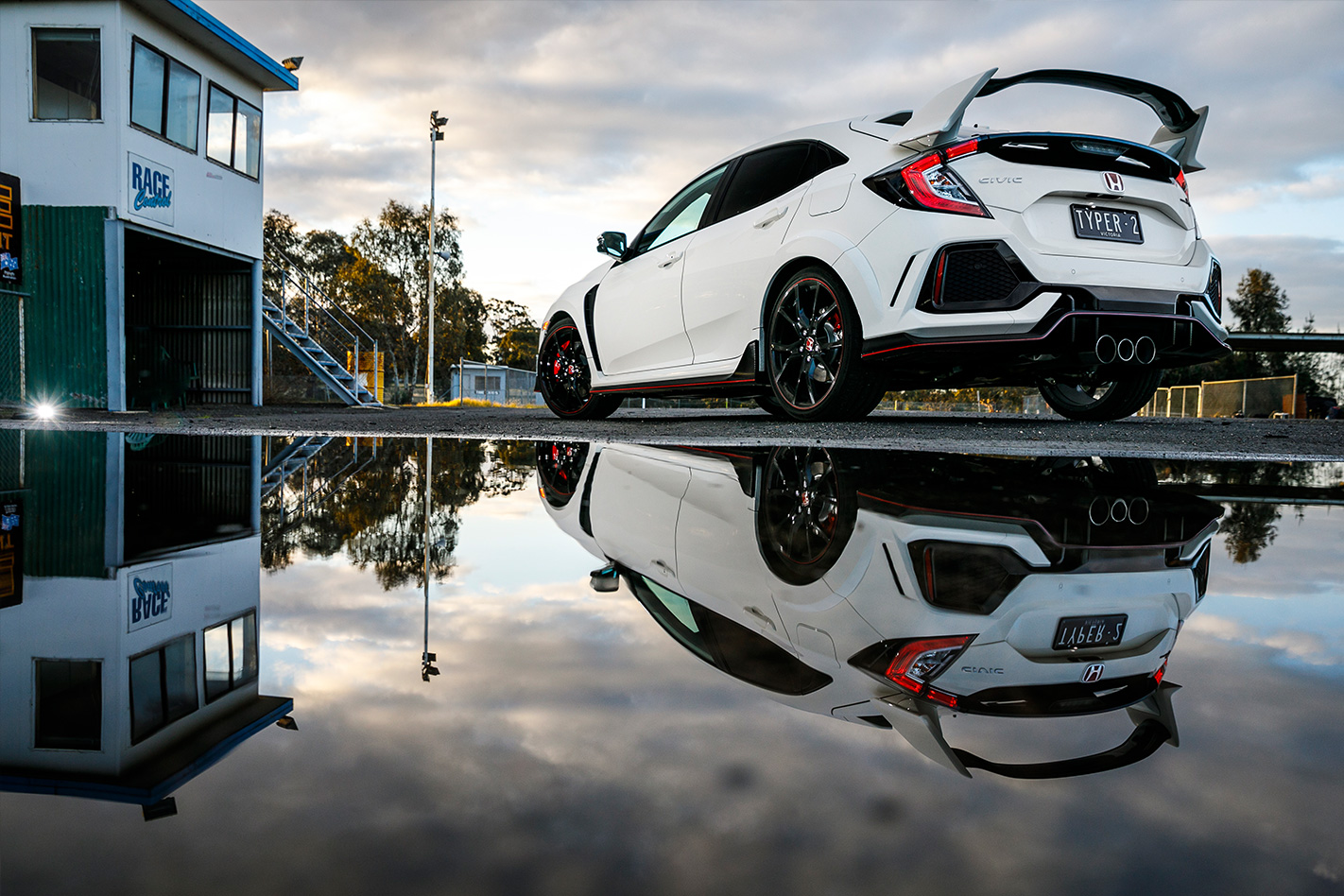
Civic Type R has taken a doctrinal turn for its latest reincarnation. Honda’s front-wheel-drive libertine has, for the first time, adopted turbocharging to stay within touch of its bullish contemporaries and returned to an independent (in this case, multi-link) rear suspension set-up that should never have disappeared.
Today’s hot-hatch landscape is tough going for a newcomer. Never has $50K afforded such a combination of power, capability and complexity. Ford tore up the segment’s front lawn last year with the brash all-wheel-drive Focus RS, pitching an antisocial curveball at Volkswagen’s much-admired Golf R in the process.
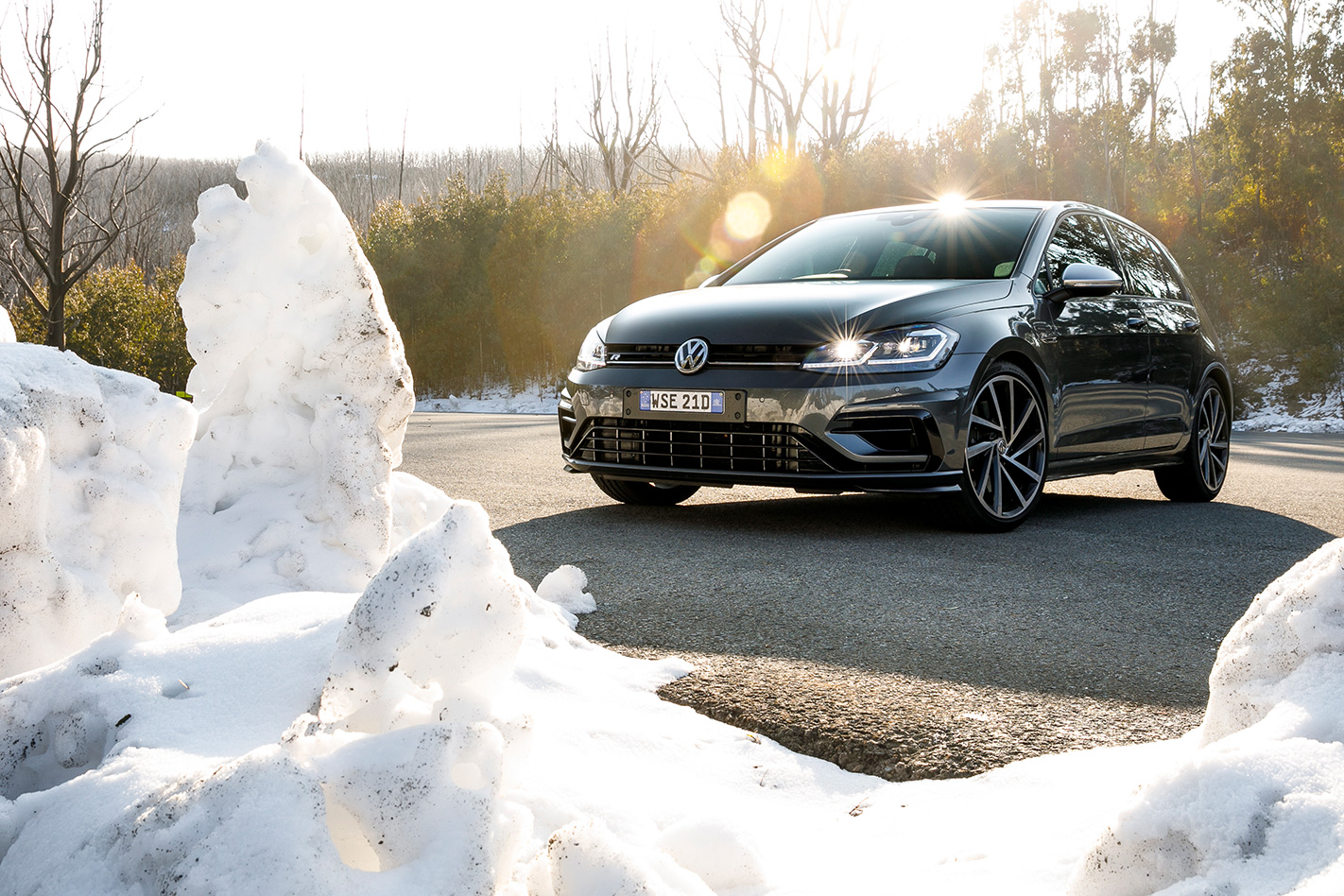
Not that you’d ever believe that possible given the Type R’s singularly focused styling. It’s by far the most visually challenging car of this trio. The base Civic isn’t exactly an easy starting point, but the over-styled Type R shows no restraint. Its gangly body addenda introduce so many design elements to an already-fussy form that it’s impossible to find a clean line anywhere.
There are practical problems caused by the Type R’s questionable looks, too. That gargantuan rear wing combines with the Civic’s raked C-pillar to create a massive vision obstruction. Still, if standing out from the crowd is everything, then the Type R is for you.
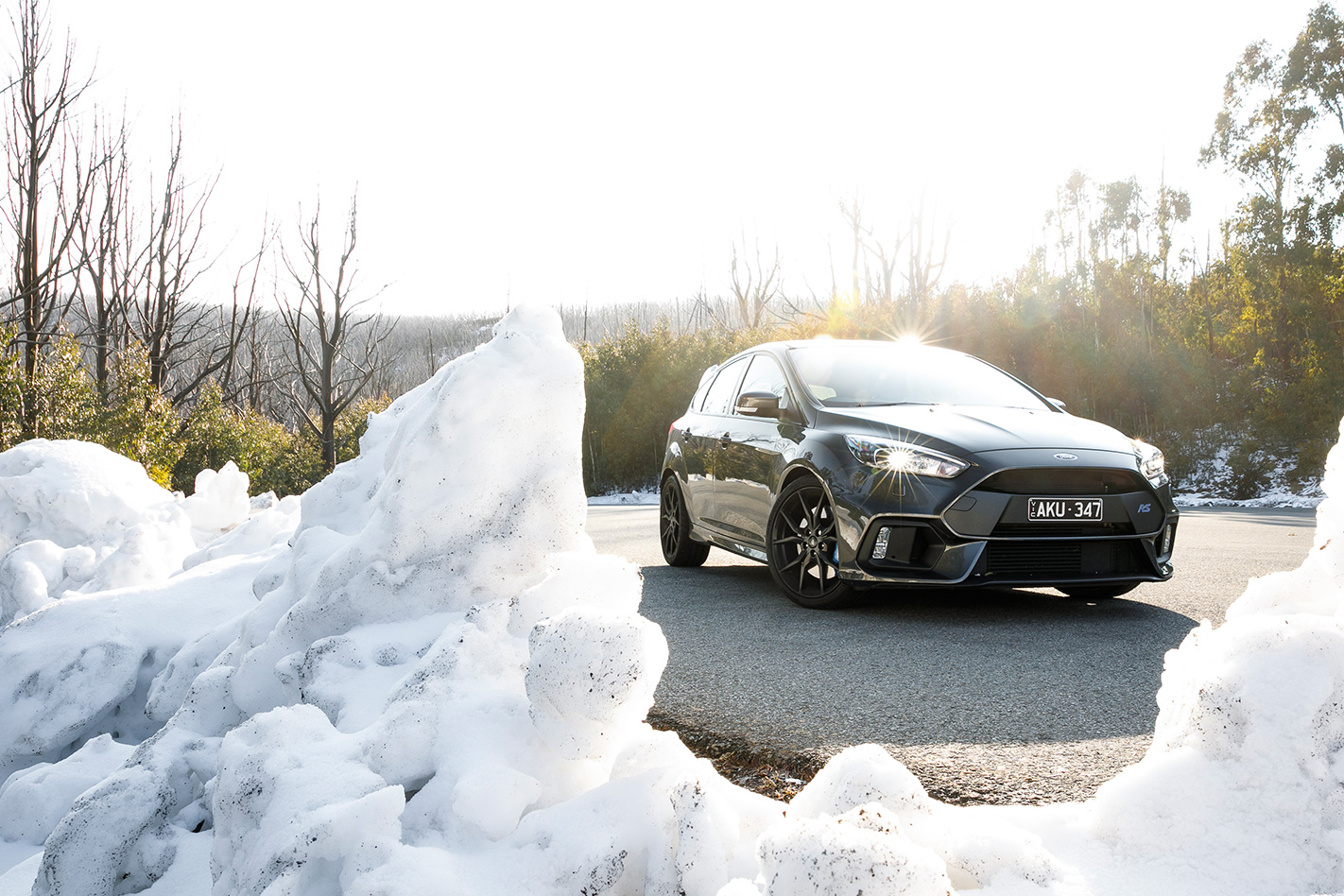
Trademark conservatism gives the Volkswagen a clear point of difference in this company. The Golf R is easily the most discreet and visually sophisticated of the three, light-on for drama but distinctly cultured inside and out. In profile, the R could be any other Golf with a big set of wheels, and for many, that’s a huge part of its appeal. But in the quest for ultimate excitement, is the German icon merely downplaying its talents?
Top honours in the horsepower fight goes to the 257kW/440Nm Focus RS, which puts everything on the line in the name of performance, though lugging a porky 1575kg, it damn well needs to. The Civic Type R sits lineball with the $50,990 Focus on price, and mid-pack for grunt (228kW/400Nm), yet its weight-optimised front-drive underpinnings mean the Honda undercuts the Ford by a solid 182kg, leaving them neck-and-neck in the power-to-weight stakes.
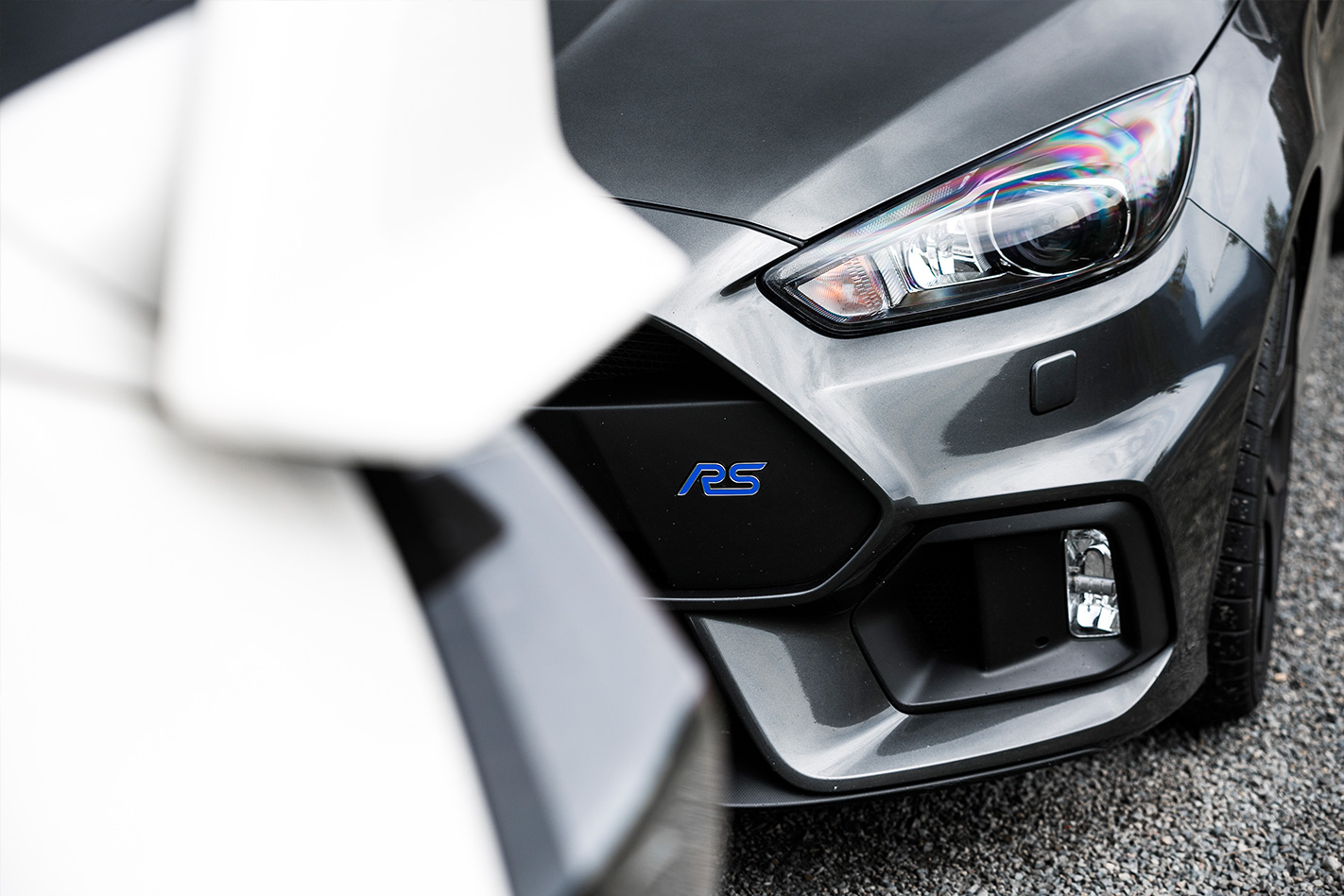
Thanks to a foolproof launch procedure – clutch in, rev to the 6750rpm limiter, then side-step your left foot – the Focus delivers ballistic standing-start performance and early blows on the competition, proving easily the quickest car to 100km/h (5.0sec), time after time, without a hint of protest. And it’s quicker when you do everything yourself, rather than relying on launch control. In comparison, the reluctant-to-launch Golf neither sounds or smells like it enjoys being caned to 100km/h (in 5.6sec), while the Civic (5.8sec) suffers simply by being traction-limited.

Spin it to the 7000rpm redline and upshifts are instantly rewarded with the tacho dropping back into full-boost territory. And its sound is wonderfully animated, with a rowdy induction roar and a metallic zinging at the upper reaches, though there’s little action from the exhaust. The Type R’s trio of tailpipes promise a ruckus, but don’t deliver it. In fact, the central outlet is designed to reduce cabin drone at cruising speeds by drawing air in. And it works.
The Ford’s 2.3-litre turbo four is the most characterful engine of the group, and lovably uncouth in Sport mode, with a rat-a-tat-tat drum line from its exhausts. On paper, its engine appears to be a straight lift from the Mustang EcoBoost, but the RS (mercifully) gets a Cosworth head and a unique intake, exhaust and turbocharger. It’s a relentlessly energetic thing, with the most linear power delivery here. And enormous mid-range thrust – as much as 470Nm – is churned out when ‘overboost’ parameters allow.
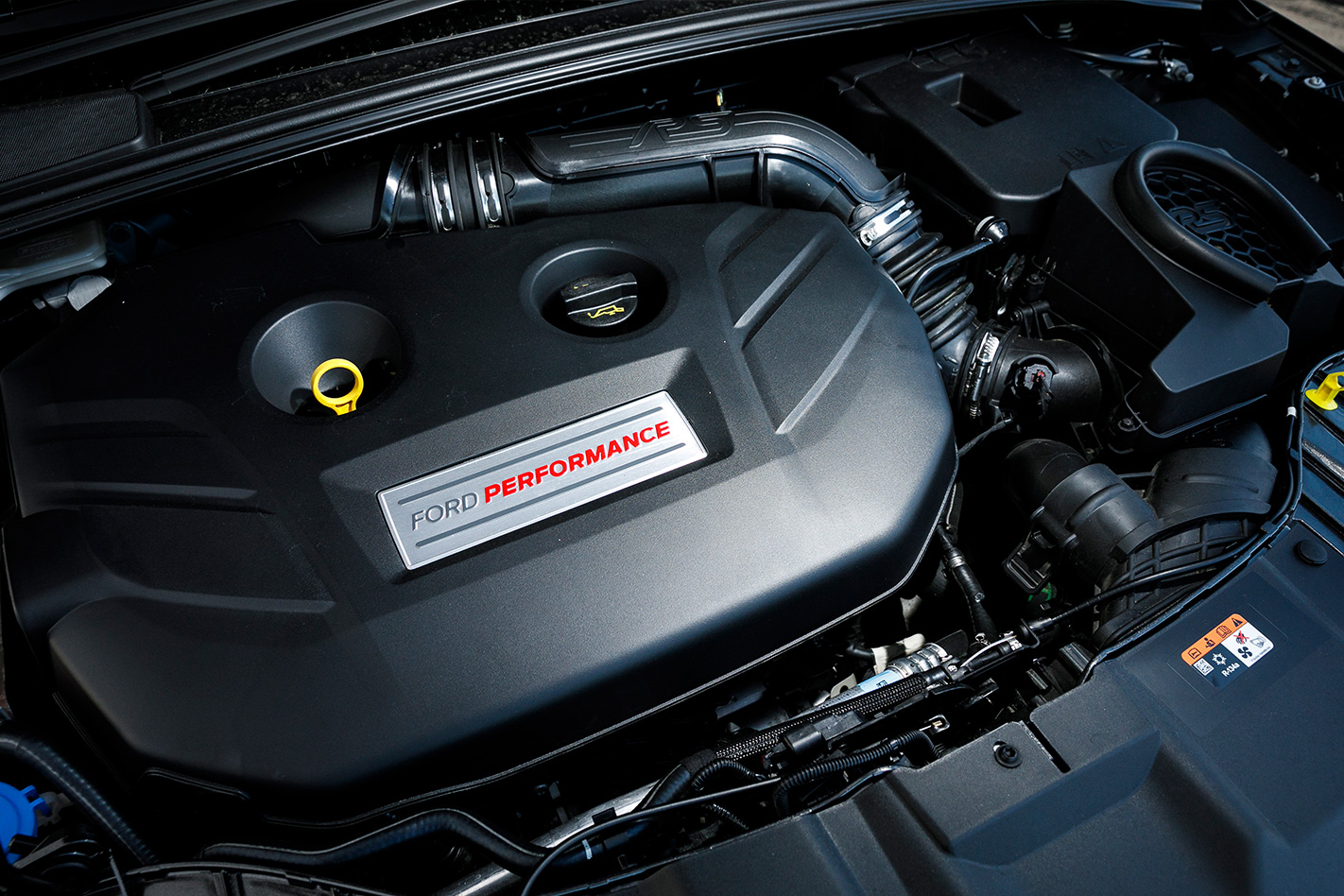
For all its visual peacocking, the Type R has an unexpected level of Golf-esque maturity, and comes close to the VW’s plushness when each car’s adaptive dampers are switched to their most easy-going modes. Incredibly, the Civic’s ride comfort isn’t sacrificed by its liquorice-strip 245/30R20 rubber, though it suffers from noticeable tyre roar on such tiny sidewalls, which is made more obvious by the lack of exhaust rumble.
The Focus can’t compete with the other two when it comes to comfort. It doesn’t do duality of character with any great conviction. Its firm, adaptively damped ride toggles between uncompromising and unbearable, though it’s dialled-in well enough to be stomached from the front seats on a daily basis. Rear-seat occupants may struggle in combination with poor visibility. The payoff, however, is ten-tenths handling excellence.
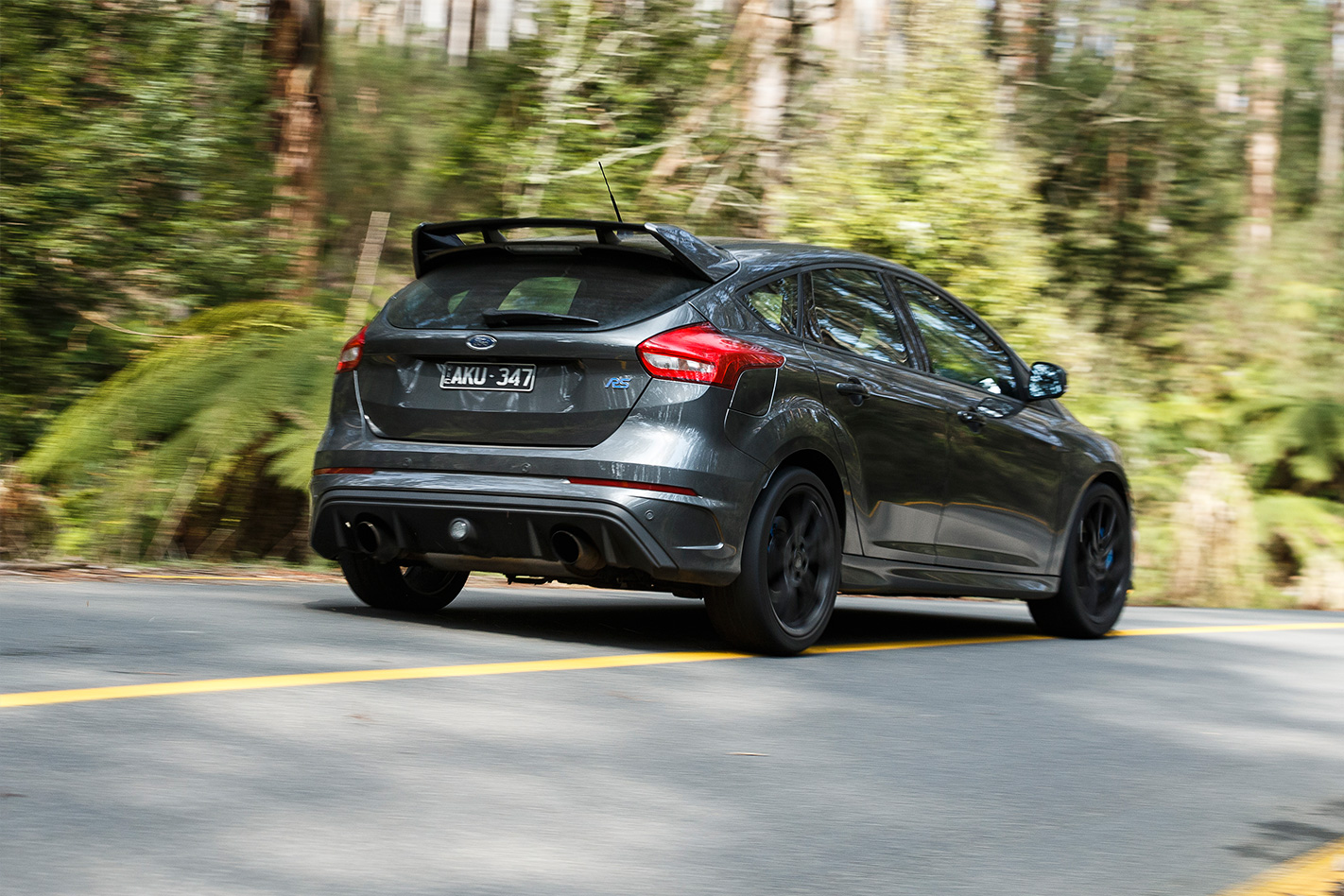
Manhandle it into tight corners and the Focus RS will lift its inside rear wheel, while Race Track mode allows small oversteer slides that require little correction, and inject a shot of adrenaline into the experience. Yet excellent brake pedal modulation and seemingly bottomless reserves of grip mean this larrikin remains friendly and easy to rein in.
The Type R is a completely different sort of car to drive quickly. It needs to be managed, and demands patience and forward planning. Set up before a corner, the Type R tears through with huge speed and minimal scrabbling as its limited-slip differential sniffs out grip. There’s some wheel fight on boost from the highly stressed front end, but its steering is fluid and predictable – less darty than the Ford’s – and its relative lack of driven wheels seldom feels like a limitation, except on greasy surfaces. It also has the slickest gearshift feel and best clutch relationship here. Intuitive is the word.
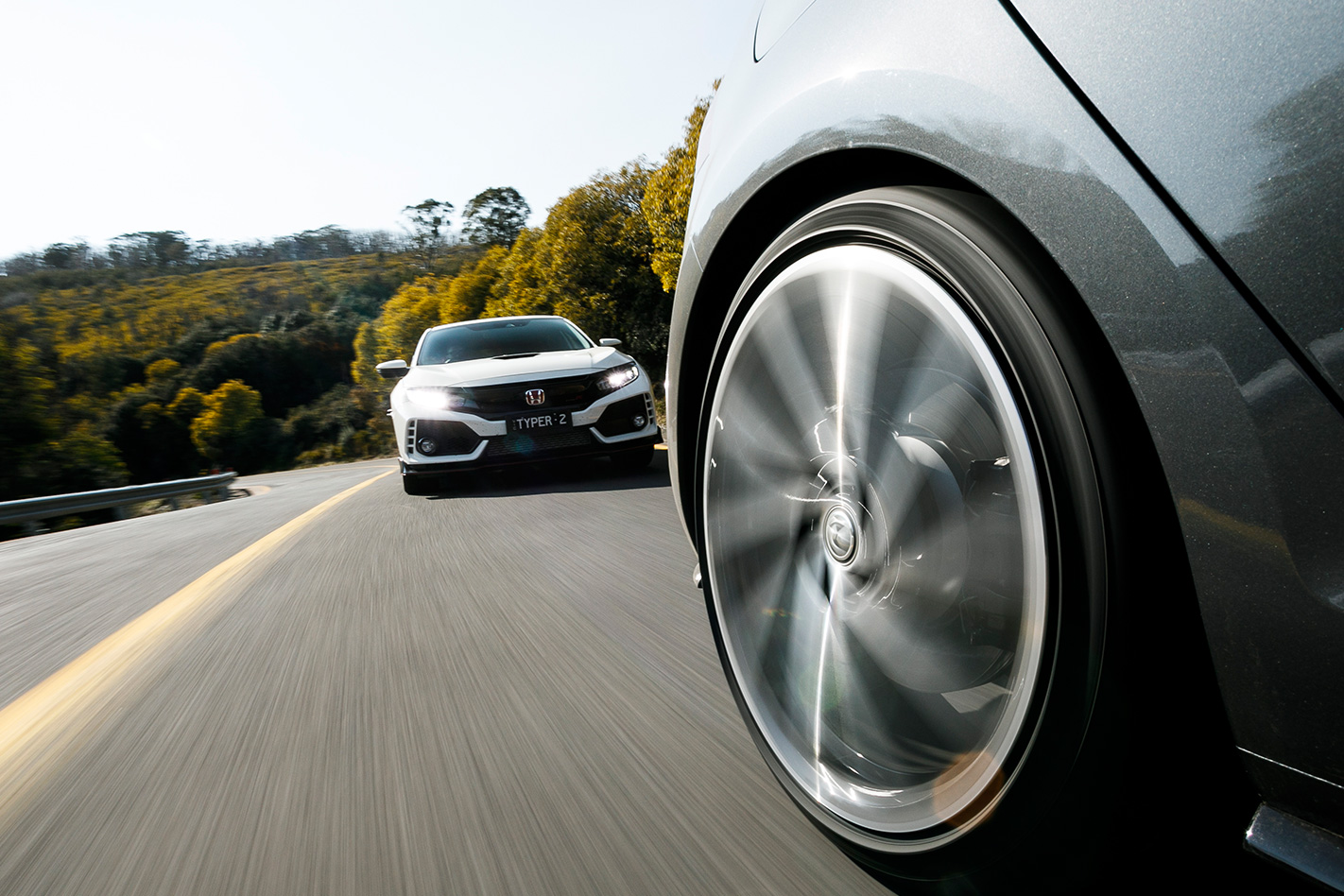
What the Civic and the Focus have that the Golf doesn’t is immediacy. Every input in the VW feels like it has a level of dampening built in to give an ultra-slick sheen of refinement. The R is an extremely effective tool, but its Teflon coating manifests as a layer of separation between driver and machine. Less initial bite from the brake pedal reduces confidence in what is otherwise a solid set-up. And there’s remoteness in the shift feel and steering as well. That said, the R is an astonishingly quick car when driven on its terms, rewarding smooth inputs.
There’s a ruthless precision to the way the VW goes about carving through corners. Its inert rear end offers huge traction and is faithful to a fault, but it means the Golf is the least playful car here. Alongside two extremely spirited and involving driver’s cars, the Golf R comes off feeling a bit anodyne and clinical, despite the thoroughness of its engineering.
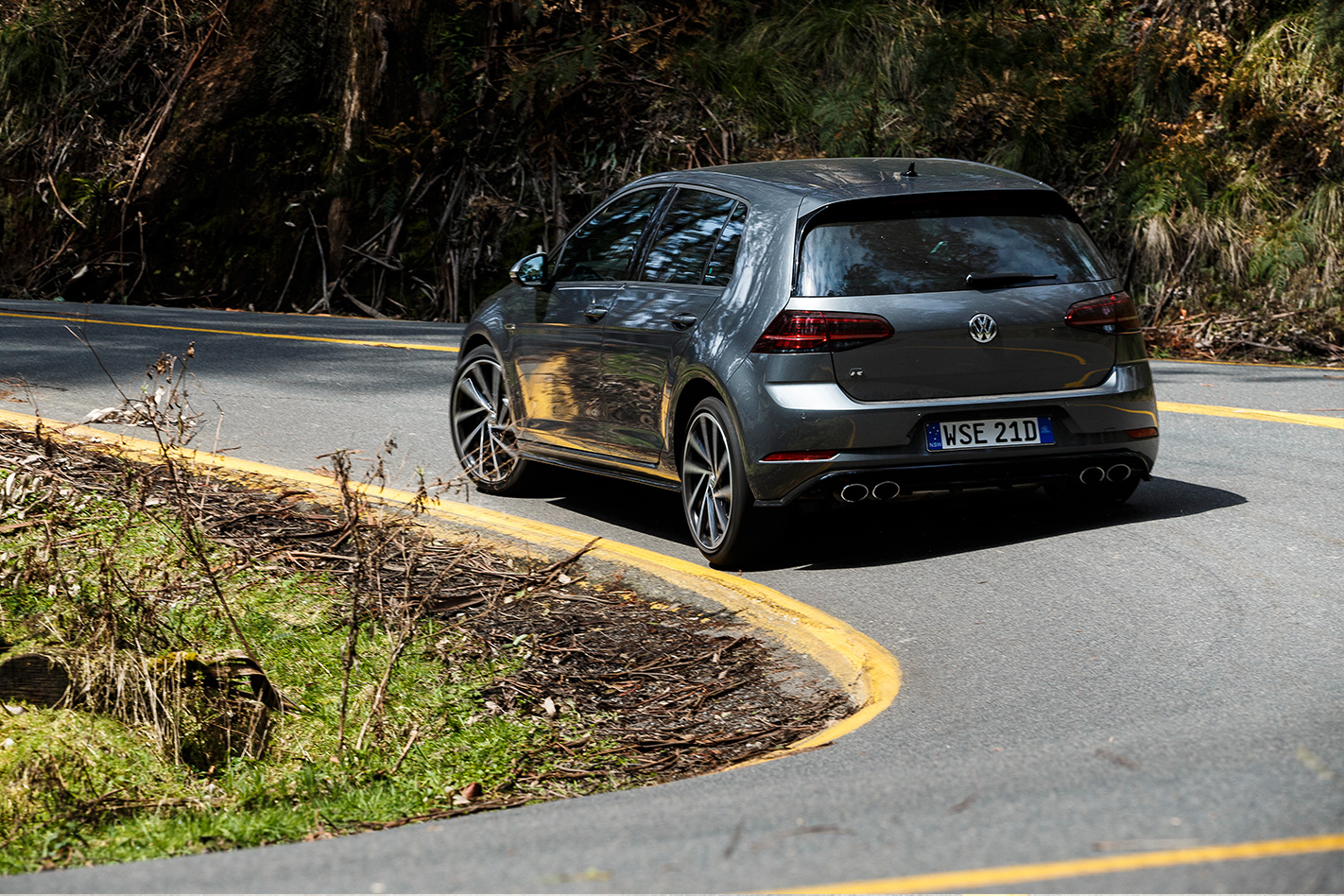
Compared to the Golf, the Ford’s ageing feature set looks relatively malnourished. Ergonomically, the RS is a mixed bag as well, with a front seating position that’s simply too high, leaving the driver’s left knee to bang against the centre console. Positive implications for outward visibility mean there’s an argument in favour of the lofty perch, but you need to adapt to it.
The rest of the Ford’s cabin is a cheap and cheerful reminder that the fruity RS doesn’t fall far from the Focus tree. It remains a useful grocery-getter at its core, but the RS’s premium price buys tricky mechanical things like GKN’s excellent torque-vectoring, all-wheel-drive set-up, not swathes of tactile cabin surfaces.

Also lacking in the Honda is an individually configurable drive mode. The +R setting has a firm ride that’s a step too far on badly pockmarked roads, forcing you backwards into the lesser Sport or Comfort settings for ride compliance, while sacrificing ultimate engine sharpness. The Focus allows its sport dampers to be independently turned on and off, leaving only the steering and throttle mapping paired together, whereas the Golf has a fully customisable set-up and can be configured exactly as required.
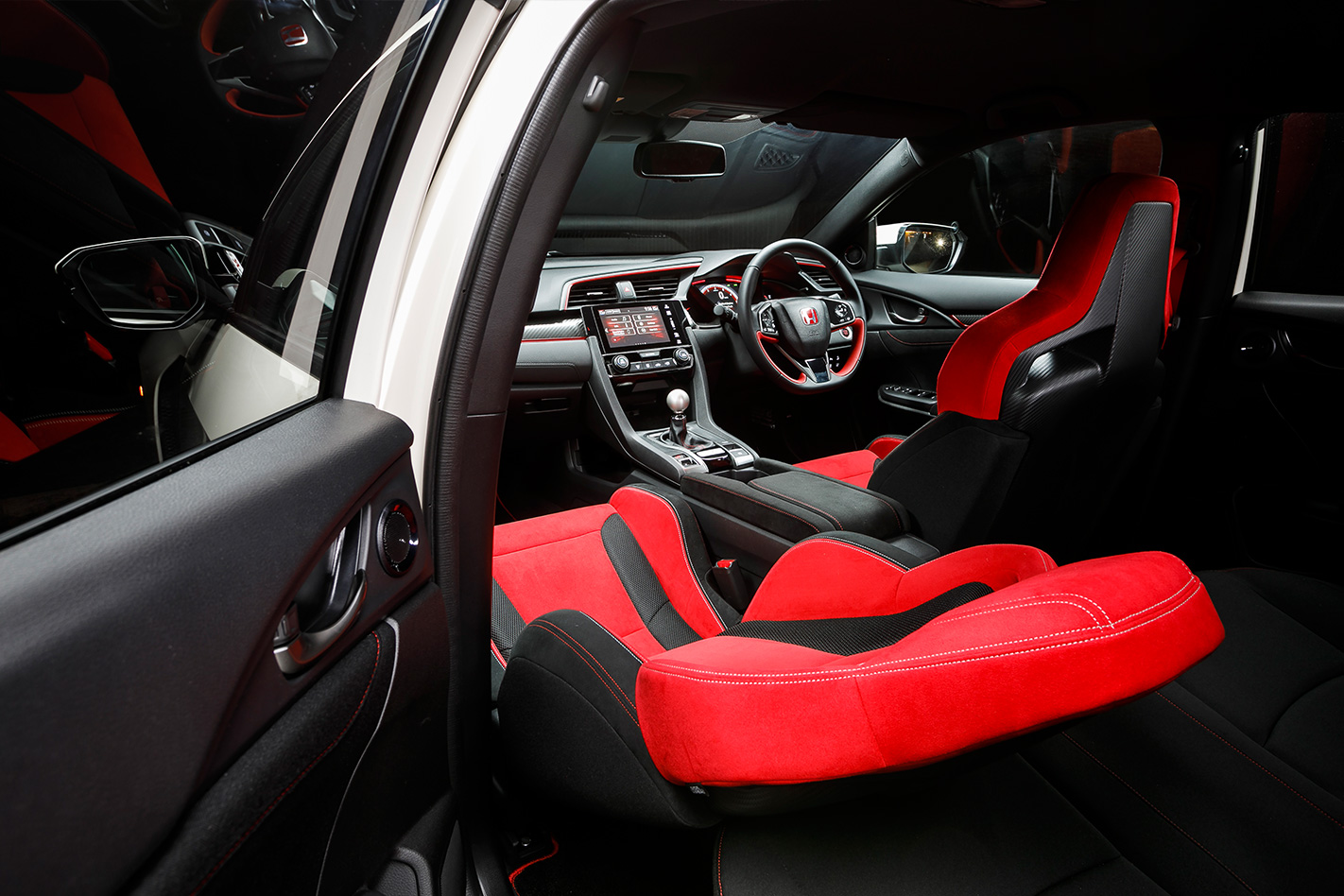
Splitting the remaining pair boils down to hot-hatch semantics. The Type R comes closest to the Golf R’s level of liveability. It spoils you when driven well and has loads of performance on tap, yet it also manages to cope effortlessly with general duties. Being everything to everyone is a tall order, yet Honda comes close to nailing the brief with its Nurburgring record holder.
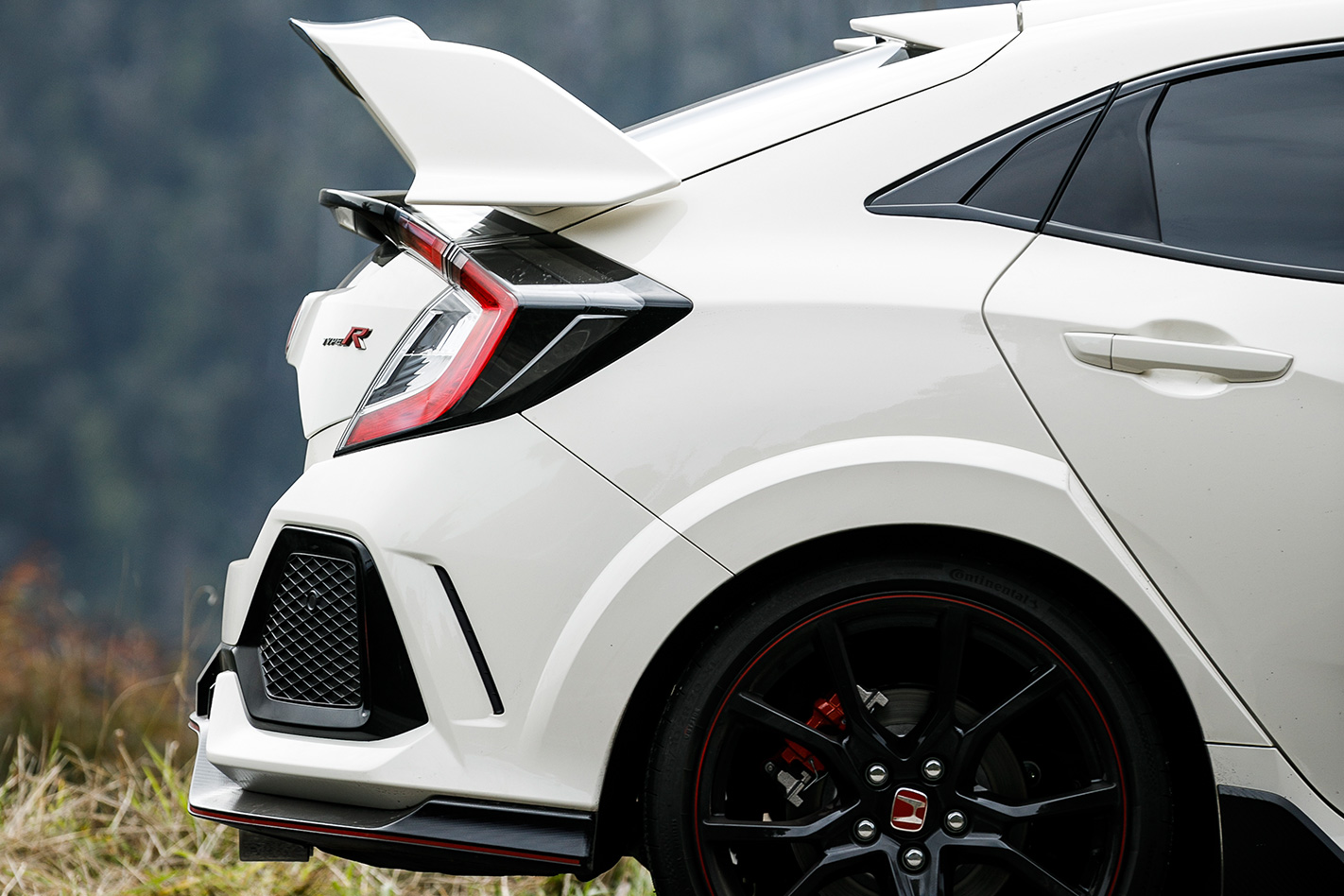
The Ford is the most transparent car here. Even as the elder statesman, it has a strikingly contemporary and tough look about it that can be understated when discerningly specified. But as a hot hatch, the Focus RS is molten, and will make you crave a special driving stage every time you’re behind the wheel.
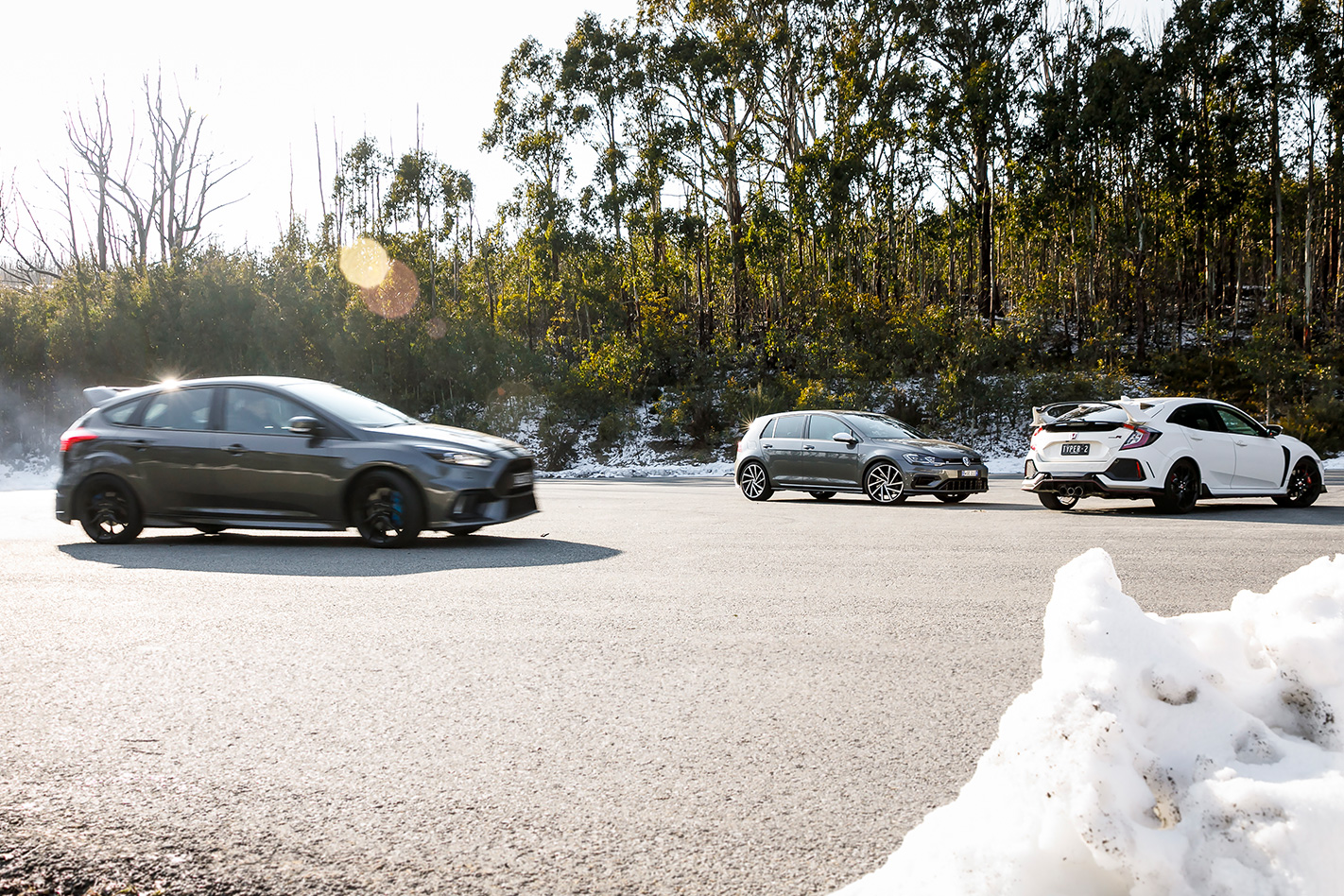
So on an emotional and dynamic level, it’s the Ford that delivers the highest highs, beyond all the box-ticking that might sway someone towards a Golf R. Close as the Type R comes to being a hot-hatch hero, it’s those visceral qualities that give the Focus RS the edge.

